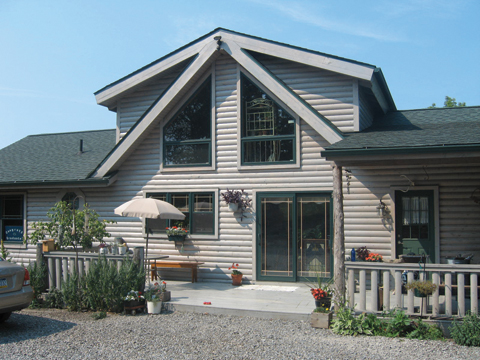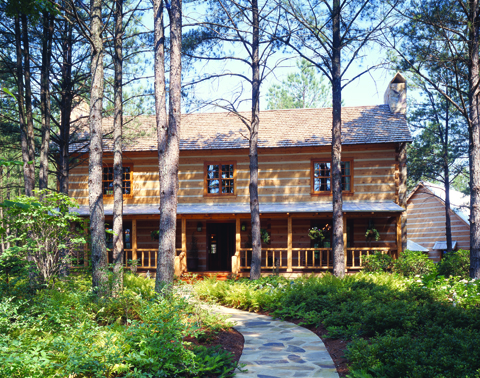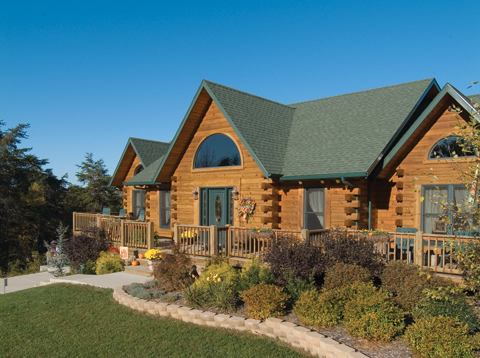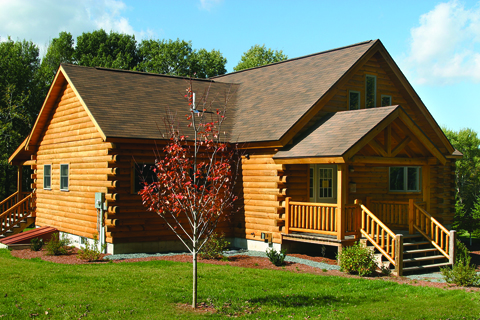“Getting comparative bids when looking at log homes is very important, unless you are very well versed in log home materials and construction practices,” says Tom Kuhns, president at Kuhns Brothers Log Homes Inc., in Milton, Pennsylvania. “In fact, getting bids is actually a part of the learning process. No two log home companies are alike. Each company has different ways of doing things and different qualities and quantities of products so you need to decide what is best for you.”
Connecting the Disconnect
Kuhns cautions log home buyers not to assume that the comparative bid process will be just like the one used with traditional homes. In most cases, for example, you’ll be purchasing materials from a log home producer, and then hiring a builder to use those raw goods to bring your new abode out of the ground. This can create somewhat of a “disconnect,” says Kuhns, and has led some log producers to add construction services to their menus. This move helps avoid miscommunication between the customer, the builder and the producer.
“Many times what is supplied by the producer is not everything that is needed to construct your home,” Kuhns continues. “So either having the producer build for you or having a very knowledgeable log home builder is very important.” A web search is also important, he says, pointing out that nearly every log home producer has a website full of product and service information. Find three to five of them (focusing only on those that meet your initial log home criteria), read through their websites and then visit their model homes.
“Check out the quality of the model, the building products used and the salesperson’s ability to answer your questions,” says Kuhns. “Then, narrow it down from there.”
Making the Grade
Once you’ve picked a few good potential companies to work with, you’ll want to select a log style, log species and floor plan. This is important because copyright issues can crop up if you use one company’s plans to obtain multiple bids from different firms. “Most companies will be hesitant to price a plan from a competitor due to copyright infringement and the cost associated with a possible lawsuit,” Kuhns explains.
“If you find a plan you really like but it’s not the producer you decided to go with, buy the plan. This will give you the right to build this house,” he continues. “You can then have the company that you decided to buy your home from legally use this plan to supply their materials.”
Be sure to keep your plans comparable in size and style, to make it easy to analyze the bids, says Kuhns. Too many differentiations will make the task insurmountable. Shoot for two to three bids, says Kuhns, or it will be “too confusing to sort through the differences” between them. For help with this task, he suggests turning to the manufacturers themselves.
“Send manufacturer A’s bid to manufacturer B, and vice versa,” Kuhns advises. “Each company will be quick to point out what they are providing above and beyond what the competition is offering.” Besides, says Kuhns, by not removing the pricing from the lowest priced competitor, you’ll give the more expensive competitor an idea of what it must beat to get your business.
“Anytime there are two companies competing for your business, you stand the best chance of getting the most materials, products and services at the best price,” says Kuhns, who adds that homebuyers should also turn to a reputable log home builder to help sort through the comparative bids. He or she should be able to point out any discrepancies or red flags, and help you make the best decision.
“Make sure your builder knows and understands the company’s product and construction methods,” says Kuhns. “This is by far the most important part of the process. A good builder can make a mediocre log package look good and a poor builder can take the best log package and make it look bad.”

Mountain Creations, Inc.
The Final Decision
When making your final decision among the various comparative bids that you collected, be sure to look beyond price. A purchase of this magnitude and importance shouldn’t be just a bottom line decision, according to the NAHB’s Log Home Council, which advises buyers to also compare quality, quantity and service. Here are few important points to consider within those categories:
Quality: How much pre-cutting is done by the manufacturer? What grade are a company’s logs or timbers? What is their moisture content? How will this affect the amount of settling that occurs?
Quantity: This refers to the amount of materials contained in a producer’s log home package and how much materials you will need to obtain locally. If you have to go out of the area for a good portion of your materials, expect to pay higher transportation and sourcing costs.
Service: What does the manufacturer offer in terms of service? An 800 number to ask advice before, during and after construction is included in the purchase price by some companies. Others charge for this service on a per hour basis.
When soliciting and reviewing comparative bids for your new log home, Kuhns says it’s important to dedicate enough time to ample research and due diligence. “Don’t be too eager to jump into a ‘special deal’ that expires tomorrow, because when tomorrow comes there will be even more of those deals to choose from,” says Kuhns. “Take your time, develop time frames, know what you want and surround yourself with reputable partners.”



